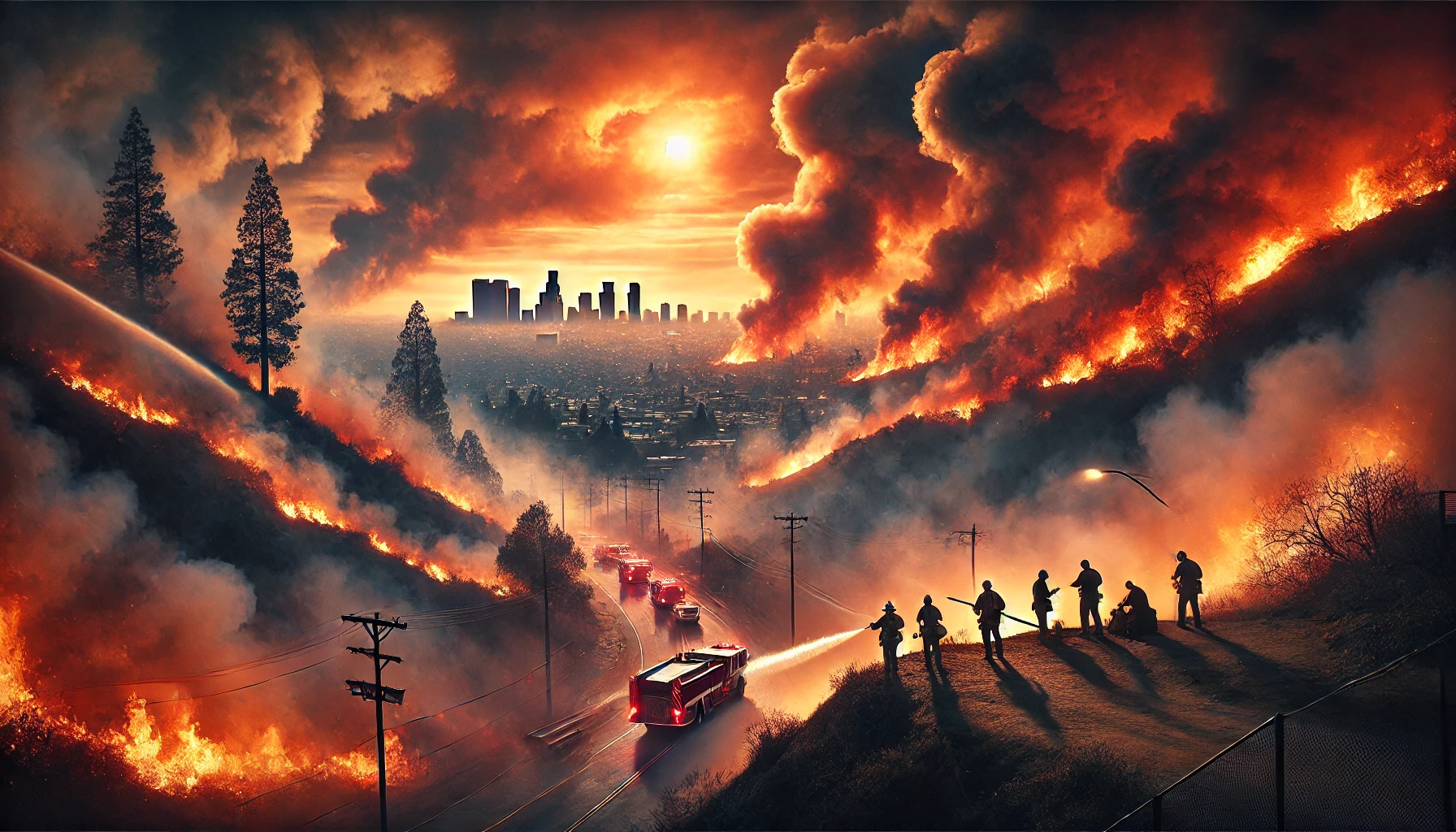As of January 2025, Los Angeles is enduring one of the worst wildfire seasons in its history. With fires sweeping through multiple areas, the city faces unprecedented destruction and loss. These fires, exacerbated by dry conditions and fierce Santa Ana winds, have put both lives and property in grave danger. The fires have not only claimed lives but have also caused widespread evacuations, with over 200,000 residents being displaced.
The Scope of the Fires
The primary wildfires currently ravaging Los Angeles include the Palisades Fire, the Eaton Fire, and the Kenneth Fire, which have collectively scorched over 40,000 acres. The Palisades Fire, which has been one of the most aggressive, has led to the destruction of nearly 2,000 homes. The destruction of such a large area is indicative of the extreme nature of these wildfires, surpassing the scale of previous fire seasons in the region.
The fires have spread rapidly, with many parts of the city facing danger from the advancing flames. High winds, reaching speeds of up to 60 miles per hour, have contributed to the rapid spread of these fires, turning them into uncontrollable blazes.
Impact on Lives and Property
The human toll of these fires is significant. At least 10 lives have been lost, and authorities are bracing for a higher death toll as more bodies are expected to be found in the aftermath. Many of the victims are believed to be caught in the path of the fires while attempting to evacuate or seek shelter. Thousands of homes, businesses, and cultural landmarks have been reduced to ashes, with residents left to cope with the sudden devastation of their lives.
Evacuations have been issued in multiple areas, affecting more than 200,000 residents. People are fleeing in droves, with emergency shelters set up across the city, providing temporary relief to those displaced by the fire. These fires have also caused massive disruptions to daily life, with air quality deteriorating rapidly due to the thick smoke that is enveloping much of the region. Health risks are climbing as vulnerable populations, such as children, elderly people, and those with respiratory conditions, struggle to breathe in the polluted air.
Economic and Cultural Losses
Beyond the tragic loss of life, the economic implications of these fires are immense. Losses from destroyed properties, businesses, and infrastructure are expected to exceed $20 billion. This makes it one of the most financially devastating wildfire events in U.S. history. The destruction of cultural landmarks, including historical homes and the Getty Villa, has left a permanent scar on Los Angeles’ rich cultural heritage. The fires have also damaged critical infrastructure, making it difficult for responders to manage the situation effectively.
The insurance claims are expected to be astronomical, with some estimates suggesting that the damages may surpass any previous wildfire events in the state. The cost of rebuilding will place a significant strain on both the public and private sectors, with long-term economic recovery likely to take years.
Efforts to Contain the Fires
Firefighters from across the state and neighboring areas have joined forces to fight the blazes. However, the combination of high winds, dry vegetation, and extreme heat has made firefighting efforts incredibly challenging. Despite these efforts, many of the fires remain only partially contained, and crews are continuously battling to prevent further spread.
In addition to firefighters, emergency services are working around the clock to provide medical care, transport evacuees, and ensure that those affected by the fires are safe. The use of air support, such as helicopters and water-dropping planes, has been crucial in slowing the fires, but the damage continues to mount.
How You Can Help
In times of disaster, the support of the community is crucial. Local relief organizations, including the Los Angeles Fire Department Foundation and the American Red Cross, are collecting donations to help those affected. If you’re in a position to do so, consider contributing to these efforts to support firefighters, evacuees, and those who have lost their homes.
In addition to monetary donations, volunteering at shelters and assisting evacuees are valuable ways to contribute. Every small act of kindness can make a significant difference in the recovery process.
Conclusion: A City in Recovery
The wildfires in Los Angeles are a tragic reminder of the unpredictable and devastating power of nature. While the destruction is overwhelming, the resilience of the people in Los Angeles and the dedication of first responders offer a glimmer of hope. As the city works to recover, it is critical for everyone to stay informed and continue supporting one another.
For real-time updates and evacuation information, monitor official channels like the Los Angeles Fire Department’s alerts and follow local news outlets. The road to recovery will be long, but the collective strength of the community will ensure that Los Angeles will rebuild.

